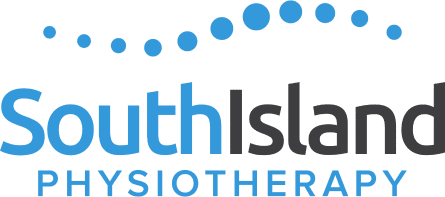The Science of Spinal Manipulation: Exploring Chiropractic Techniques
Embarking on the journey of pain management, particularly in the realms of lower back and neck pain, often leads individuals to consider chiropractic care. At the core of this approach lies the chiropractic adjustment, a therapeutic technique where controlled force is applied to specific joints, primarily in the spine.
In this extensive exploration, we will delve into the intricacies occurring within the body during a chiropractic adjustment, emphasizing its role in reducing pain, addressing stiffness, and enhancing overall musculoskeletal function.
Understanding Chiropractic Adjustments
Chiropractic adjustments, synonymous with spinal manipulations, play a pivotal role in the chiropractic profession. This chiropractic technique involves applying controlled force to specific joints, predominantly in the spine, to rectify movement limitations and optimize nervous system function. Such adjustments are known to play a crucial role in pain relief, not only for low back pain but also for various musculoskeletal issues.
Neck Pain and Chiropractic Treatment
Neck pain is a common ailment that can significantly impact daily life. Chiropractic care extends its efficacy beyond the lower back, offering a valuable treatment option for individuals experiencing neck pain. The therapeutic benefits of chiropractic adjustments in addressing neck pain are well-documented. By applying targeted force to the vertebrae in the cervical spine, chiropractors aim to alleviate muscle spasms, reduce stiffness, and enhance overall neck function.
The Safety of Chiropractic
Prior to getting a chiropractic adjustment, concerns about safety often arise. The chiropractic profession places a strong emphasis on the safety of chiropractic adjustment techniques. Licensed and trained chiropractors employ various methods to ensure both safety and efficacy of their interventions. These approaches prioritize patient well-being, aiming to alleviate pain, reduce stiffness, and enhance joint function while minimizing adverse effects.
The conventional narrative is that a patient will see a chiropractor to “re-align” the vertebrae. The truth is there are a number of redundancies in the form of ligament protection that don’t allow dramatic movement of the vertebrae in the first place, so the popping sound heard is not the relocation of bones but rather a side effect of the treatment itself.
In fact, the joints do not have to pop at all for the technique to work. Knowing this allows the chiropractic to maneuver the spine in a gentle way to place the joint in the optimal position to apply a controlled force that has the effect of “ resetting” the muscle tension in the affected region.
Efficacy in Pain Relief
Research consistently supports the effectiveness of chiropractic adjustments in reducing pain, both in the lower back and the neck. A systematic review of the literature conducted by the American College of Physicians highlighted the positive effects of spinal manipulation, a key component of chiropractic care, in managing not only lower back pain but also neck pain.
Patients seeking chiropractic care often experience pain relief within 24 hours, showcasing the swift impact of these adjustments. The exact mechanism of effect during a chiropractic manipulation remains elusive, but data shows that adjustments given at the right time and for the right person can dramatically reduce muscle spasms and improve pain threshold, leading to a shorter duration of back pain compared to not receiving a spinal adjustment at all.
Specific Conditions and Pain Management
Chiropractic adjustments are not limited to addressing low back and neck pain; they extend to managing sciatica, joint pain, leg pain, and other musculoskeletal issues like ankle sprains, shoulder strains, etc.
The chiropractic adjustment refers to a chiropractor using manual manipulation of the spine, employing various techniques to treat and prevent pain issues associated with joints or muscles. Chiropractors are equipped to assess a patient’s medical history and perform a thorough examination to tailor a treatment plan that best suits the type of pain experienced.
The Role of Inflammation
Chiropractic adjustments might also contribute to pain relief by reducing inflammation. Evidence suggests that spinal manipulative therapy can help reduce inflammatory responses in the body, offering an adjunct to traditional medical care that often relies on pain relievers. For individuals experiencing back and neck pain, seeking chiropractic care can provide a holistic approach that addresses both symptoms and underlying causes.
Safety and Adverse Events
Concerns about adverse events associated with chiropractic adjustments are a valid consideration. However, research supports the overall safety of chiropractic care when administered by a trained and licensed healthcare provider. Serious side effects are rare, and any increased pain following an adjustment typically resolves within 24 hours. It is essential for individuals to communicate openly with their chiropractors, providing feedback to ensure a positive and tailored experience.
Chiropractic Adjustment Techniques
Chiropractors employ various adjustment techniques, each designed to address specific pain issues, including neck pain and stiffness. These techniques include joint cavitation, where a quick thrust is applied to a joint to produce a cracking sound, and spinal mobilization, a gentler manual manipulation of the spine. The amount of force applied during chiropractic adjustments is carefully controlled, ensuring a therapeutic treatment that enhances the normal range of motion and improves joint function.
Integration with Traditional Medical Care
Chiropractic care is not a standalone solution; rather, it complements an active/ adaptive exercise strategy to ensure the body can achieve durable results. Many chiropractors work in conjunction with physiotherapists, RMTs, and kinesiologists, offering a collaborative approach to pain management. This integration allows patients to benefit from a collaborative, patient-centred care plan, ensuring comprehensive and personalized success.
Conclusion
In conclusion, chiropractic adjustments, as a therapeutic treatment, play a vital role in reducing pain, enhancing joint function, and promoting overall musculoskeletal health, not only in the lower back but also in addressing neck pain. Supported by a robust body of evidence, chiropractic care offers a safe and effective option for those experiencing lower back and neck pain and various musculoskeletal issues.
We are grateful to have the support and collaboration of Dr. Kevin Sommerfeldt here at South Island Physiotherapy to meet the needs of our patients and offer his unique perspective in order to provide a dynamic and bespoke interdisciplinary approach to well-being. For more information/interest regarding the use of adjustments for your recovery, Dr. Sommerfeldt is available to discuss and treat any of your concerns and get you back to your joy!

